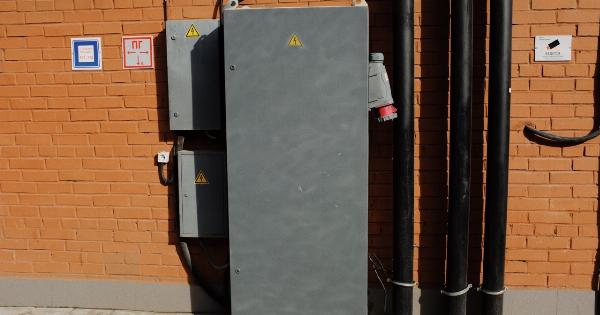When it comes to investing for the future, many individuals turn to Individual Savings Accounts (ISAs) as a popular and tax-efficient option. However, there is often a lot of confusion and misinformation surrounding ISAs.
In this article, we aim to separate the fact from fiction and provide a clear understanding of what ISAs are, how they work, and their benefits.
What is an ISA?
An Individual Savings Account (ISA) is a tax-advantaged savings and investment account available to residents in the United Kingdom.
The main benefit of an ISA is that any income or capital gains generated from investments held within the account are tax-free. This means that any interest earned on savings or returns from investments are not subject to income tax or capital gains tax.
Types of ISAs
There are several types of ISAs available to cater to various investment needs and goals. Below are some of the most common types of ISAs:.
1. Cash ISA
A Cash ISA is a savings account where you can deposit money and earn tax-free interest. It is a low-risk option and is ideal for individuals who want to save their money without taking any investment risks.
2. Stocks and Shares ISA
A Stocks and Shares ISA allows you to invest in a wide range of investment options such as stocks, bonds, mutual funds, and exchange-traded funds (ETFs).
This type of ISA carries more risk than a Cash ISA but has the potential for higher returns.
3. Innovative Finance ISA
An Innovative Finance ISA (IFISA) allows you to invest in peer-to-peer lending platforms or crowdfunding projects. This ISA type is relatively new and provides an alternative investment option to traditional savings and stocks and shares.
4. Lifetime ISA
A Lifetime ISA is designed for individuals aged 18 to 39 to save for their first home or retirement. The government provides a 25% bonus on contributions, up to a maximum limit, making it an attractive option for long-term savings goals.
ISA Allowance
Each tax year, the government sets a limit on the amount you can invest in an ISA, known as the annual ISA allowance. For the current tax year, the allowance is £20,000.
This means you can invest up to £20,000 across all types of ISAs or allocate the full amount to a single type of ISA.
Tax Advantages
The main advantage of ISAs is their tax efficiency. Here are a few key benefits:.
1. Tax-Free Income
Any income generated within an ISA, whether it’s interest earned on cash or dividends from stocks, is not subject to income tax. This can significantly enhance the overall return on your investments.
2. Tax-Free Capital Gains
When you sell investments within an ISA and realize a capital gain, you don’t need to pay capital gains tax. This allows you to keep more of your investment returns and benefit from the power of compounding over time.
3. No need to report in tax returns
As ISAs have tax advantages, you do not need to declare income or capital gains generated from your ISA investments in your tax returns. This simplifies the reporting process and saves you time and effort.
ISA Myths Debunked
There are several myths and misconceptions surrounding ISAs. Let’s debunk some of the most common ones:.
1. ISAs are only for the wealthy
Contrary to popular belief, ISAs are not just for the wealthy. Anyone over the age of 18 who is a resident in the UK can open an ISA.
With a wide range of investment options available, you can start with a modest amount and gradually increase your contributions over time.
2. ISAs have low returns
While it’s true that cash ISAs may offer lower returns due to low-interest rates, there are other types of ISAs, such as Stocks and Shares ISA, which have the potential for higher returns.
The return on investment depends on various factors such as market conditions, investment strategy, and individual risk tolerance.
3. Switching ISAs is complicated
Switching between ISAs is a straightforward process. You can transfer your existing ISA holdings from one provider to another without losing the tax advantages.
It’s essential to compare fees, investment options, and customer service before making a switch to ensure you receive the best deal for your investments.
4. You can only contribute to one ISA per year
This is not true. You can split your annual ISA allowance across multiple ISA accounts or contribute the full amount to a single ISA.
For example, you can invest £10,000 in a Stocks and Shares ISA and contribute the remaining £10,000 to a Cash ISA in the same tax year.
Choosing the Right ISA
The choice of the right ISA depends on your financial goals, investment horizon, and risk tolerance. Here are a few factors to consider:.
1. Investment Goals
Determine whether you are saving for short-term goals, such as a holiday or emergency fund, or long-term goals like retirement or purchasing a property. Different ISAs cater to different investment objectives.
2. Risk Tolerance
Consider your risk tolerance before choosing an ISA. If you have a low tolerance for fluctuations in investment value, a Cash ISA may be a suitable option.
However, if you can tolerate higher risk and aim for potentially higher returns, a Stocks and Shares ISA might be more appropriate.
3. Time Horizon
Your time horizon is an essential factor to determine the investment strategy. Short-term goals may require more stable and liquid investments, while long-term goals provide opportunities for compounding and potential growth.
Conclusion
ISAs provide a tax-efficient way to save and invest money for individuals in the UK.
By understanding the various types of ISAs, their tax advantages, and debunking common myths, you can make informed decisions and choose the right ISA that aligns with your financial goals and risk tolerance.



























